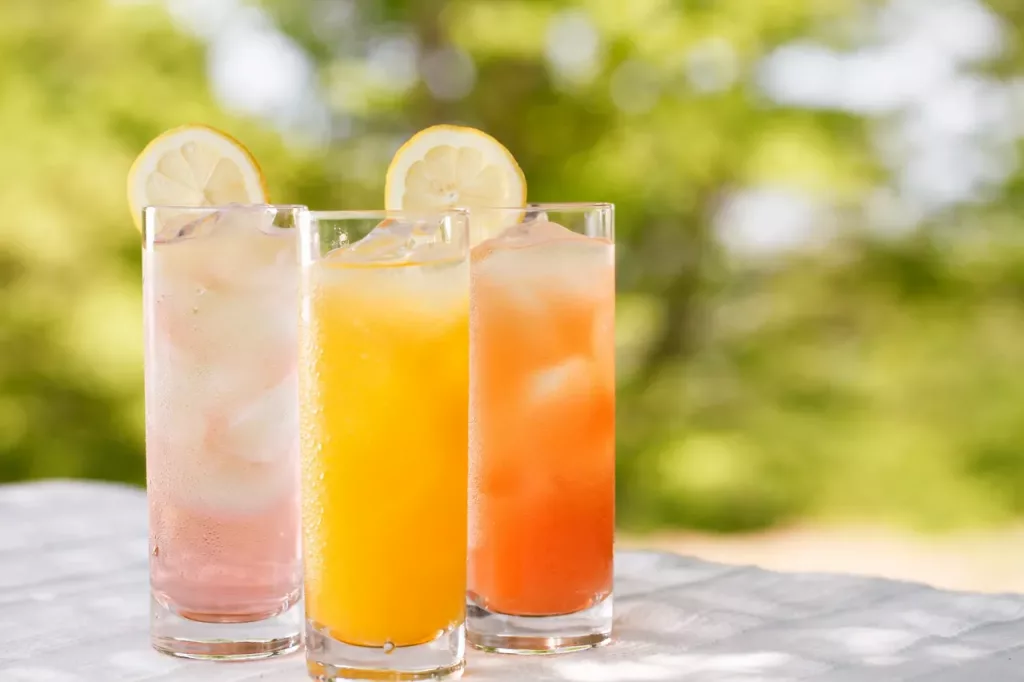
Richard Horwell, Brand Relations explores how drink startups can really boost their business this year. Soft drinks buyers do their range reviews in the first three months of the year; this is so that new brands are on the shelves after Easter ready for the Spring / Summer when consumers are craving delicious soft drinks. This means you should be preparing now if your brand is to have a bumper summer in 2021.
There is no question 2020 has been an incredible year for the development of new healthy products and for Brand Relations, it’s been our busiest year yet. We have seen so many budding entrepreneurs come who have been stuck at home looking for a way out of their job and into their own business; encouraged by the fact the supermarket and retailers in food & drink have seen an upturn in business since the pandemic.
So, what do startup founders need to do now to ensure their drinks are a phenomenal success over the summer?
January is when you should be presenting your product to the major buyers to ensure your brand is delivered and on the shelves for the summer. Traditionally alcoholic drinks fare well in the winter months and over Christmas and non-alcoholic during the summer. So, you need to establish yourself and your soft drink offering ready for these two key seasons.
Let’s review the steps entrepreneurs need to take to sell-in a drinks brand in Q1.
Know everything about your brands and its competitors
It is important you understand your brand, your target audience and the style and type of retailer that would work best for your product.
To really understand this, you need to look at the competition and what products the buyer will remove to replace with yours. You must think about where your product will sit in store and how you will generate sales.
As a startup founder it is important to begin by visiting the stores you want to be listed in so that when the time comes to speak to the buyer you are an expert on their stores. Think about the types of products they stock and how they sell them. While doing your research, you want to determine if your target audience shop there, and will they pay the RRP you are suggesting?
These are the essential first steps that, in my experience, many brand owners overlook.
List the key buyers you will target
Find out a little about them. And be sure you know what they are looking for. Just because you want to be listed by them, doesn’t mean you are right for them. So do your research. A little preparation now will save you time and money later.
The biggest issue in getting a listing with your target retailer is understanding their shoppers needs, I have been told many a time by buyers that our fridges or walls don’t stretch, we need to remove a brand to put your in, so how can they be sure your brand will replace the volume of the one they remove? How will consumers know your brand, why will they cross the road to buy it, all of these questions need to be answered before you have any chance of getting a listing.
Focus on your online presence
Before January you will need to make sure your website has all the answers to the questions a buyer is likely to ask.
Just as importantly, you need activity on your Social Media. More recently the bigger stores have employed Social Media experts to look around for the brands that have the most interest and followers, then they contact them for more details. Why do they do this? Because your activity and followers give them a good indication of how well your brand will sell.
If your social media is looking a bit lack lustre start building it right now! Ask friends and family to follow your accounts and interact with your posts. Also start following relevant influencers, sales outlets where you want to be stocked, and, if possible, the buyers themselves. Start to create a buzz around your product and connect with people you’d like to work with.
Create fabulous sample boxes.
I have known many brands that have just sent a case of their product to a buyer hoping that somehow a lot of product will magically make the buyer interested. However, this is not a good approach. Buyers tell me they really dislike this. As most of them have small offices and the last thing they want is to fill them with hundreds of free products.
A lot of brands also forget that buyers are consumers too. And just like any consumer, the first impression is the most important impression. We suggest to our clients that they create sample boxes that make their brand look like a beautifully presented gift. The box should look great and have your branding and information on it. A few years ago, we put together some Christmas Hampers made up of all the brands we were working with, the response was incredible, one buyer rang and thanked us, but said he was sorry; but he wasn’t allowed gifts. He was very surprised when he realised, they were samples as they were presented much more like a gift than a ‘freebie’.
The best response was from the buyer at Whole Foods, who said; ‘Thank you for sharing with us your innovation, highly appreciated, some other people I would expect this from are not doing half what you did! Thanks.’ Needless to say, we got the listings we wanted with that buyer.
So, the takeaway is: Put some time, effort and resource into creating sample boxes that will grab the buyers’ attention.
Begin with a focus on quality
Many startup founders want to go straight to the Multiples, looking for instant volume. But that is a mistake. You need to cut your teeth on the smaller ‘Premium’ retailers and build the brand.
Consumers in the likes of Whole Foods and Planet Organic are prepared to take the time to look for, and understand, new brands. Whereas the typical Tesco shopper is in there to grab the weekly shopping and get out.
Unfortunately, I have seen a lot of brands going into one of the big retailers on a trial and then after a few months they have been delisted. Once delisted by a larger retailer, none of the premium retailers are interested and so it’s the end of the road.
If you look at the industry as being a pyramid, then you start at the top and work your way down, going in at the bottom or ‘mainstream’ and trying to go upwards simply doesn’t work.
Be persistent
So many entrepreneurs have said to me ‘I emailed that buyer, but he never responded so I left him/her alone’. I have a lot of friends who are buyers, and they are some of the most overworked people in this industry. You need to catch their attention and apply some gentle pester-power. I am not suggesting you harass them as that won’t get you anywhere, but don’t just give up when they don’t respond. Be patient and give them time.
Most importantly, don’t send unrequested samples as that will have the opposite effect to the one you want! Wait for them to respond and ask for samples. And hang in there. It will happen.
Develop marketing plans
Just because your product is on a shelf doesn’t mean it will automatically sell. You need to create a marketing plan. If a product fails to sell it will be delisted. No buyer wants to stick their neck out for a new brand only to find that the product ends up gathering dust on the shelf. So, create a marketing plan, put it into action, and communicate it to the buyers. It will help give them confidence that if they stock your brand, it will actually sell.
Show flexibility
Many startup founders say to me, for example, ‘I want to be stocked in Waitrose’. My response is simply this, ‘You need to take what you can get’.
I am not suggesting you take anything that is thrown your way, in particular this applies to the big ‘discounters’, but I am saying that if a buyer believes in your brand and they are in the top of the pyramid, then try to explore and support that buyer in their stores and build a reputation for yourself and your brand.
I have a saying ‘no buyer wants to be first, but no buyer wants to be last’. If others see your brand selling, then you have a good chance of getting more listings elsewhere
In summary
Startups in the food & drink industry are much like most new businesses. This means that only one in ten will survive beyond two years. As an entrepreneur you’ll want to ensure that your startup is in the successful ten percent. Remember that the first three months of 2021 are make or break as this is when you need to sell your brand to the buyers. Use your knowledge and skill to do this well and your brand can have a bumper summer in 2021.
About the author
Richard Horwell is the owner of Brand Relations, a specialist food and drink marketing and branding company based in London. Over the last 12 years, Brand Relations has been behind the launch and development of over 100 brands in the UK. Richard has also built up and sold companies of his own in the Food and Beverage sector. He has over 30 years’ experience in marketing FMCG brands around the world, having lived and worked in the UK, USA, Australia and the Middle East. www.brandrelations.co.uk
https://www.linkedin.com/company/brand-relations-ltd/
https://www.instagram.com/brandrelations/
https://www.facebook.com/brandrelationsltd
- lisafoundersitehttps://thesuccessfulfounder.com/author/lisafoundersite/
- lisafoundersitehttps://thesuccessfulfounder.com/author/lisafoundersite/
- lisafoundersitehttps://thesuccessfulfounder.com/author/lisafoundersite/
- lisafoundersitehttps://thesuccessfulfounder.com/author/lisafoundersite/






